Aquarium catfish are amazing creatures whose exotic beauty can be enjoyed endlessly. Their appearance completely destroys the human idea of how a fish should look. They do not have scales - instead, their skin is protected by mucus-coated skin, or by an intricate shell consisting of bone plates. However, this feature does not make them unattractive. On the contrary, each representative of a huge species diversity of catfishes is unusual in its own way and even charming. What types of these fish are popular with aquarists? What conditions of detention do they need? What are the features of caring for aquarium catfish? Let's talk about everything in this article.
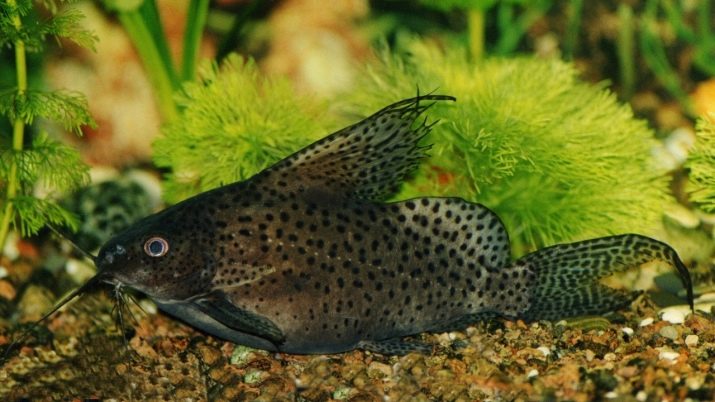
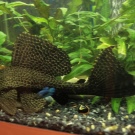
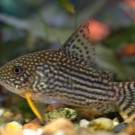
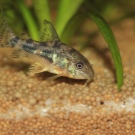
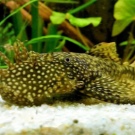
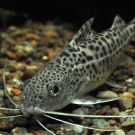
Description
According to several sources, aquarium catfish are one of the oldest species of fish from those found at home.
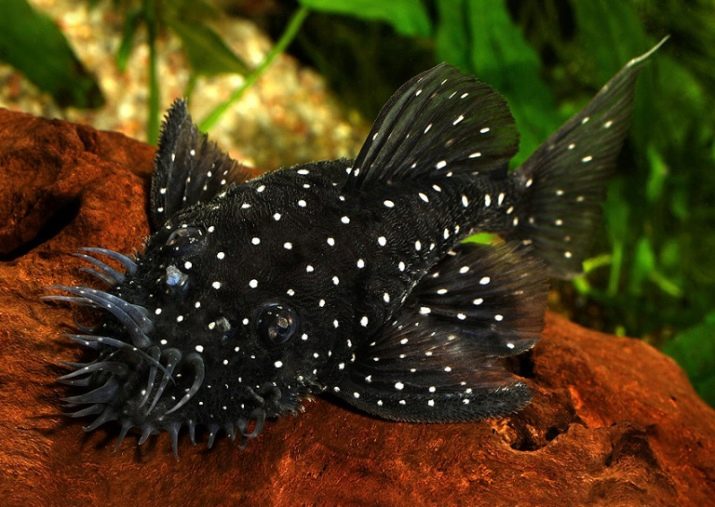
According to some reports, the age of the remains of their ancient ancestors, discovered by scientists during excavations, amounts to tens of millions of years!
The species diversity of aquarium catfish is unusually large. Here you can find very tiny representatives of the aquarium fauna, whose sizes do not exceed a couple of centimeters, and relatively large individuals, reaching a length of 35-40 centimeters or more. There are also giant catfish, capable of reaching 1-2 meters in length, but at home they do not contain them.
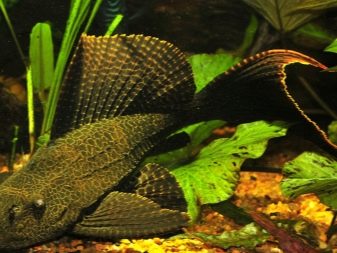
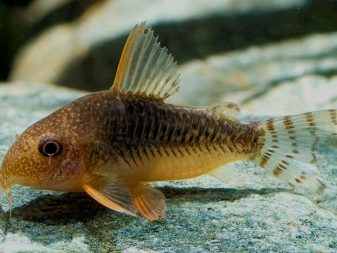
These amazing inhabitants of home reservoirs have a variety of colors. Their bodies often have an unusual shape. However, almost all aquarium catfish share several common features. Firstly, they all lead a bottom lifestyle, preferring to stay in depth. Secondly, evening or night activity is characteristic of aquarium catfish. With the onset of darkness, they, like their larger relatives living in the wild, swim out of hiding places in search of food.
Another specific feature common to all somoids is the presence of a bunch of sensitive antennae located at the mouth. They help fish navigate the environment and get food.
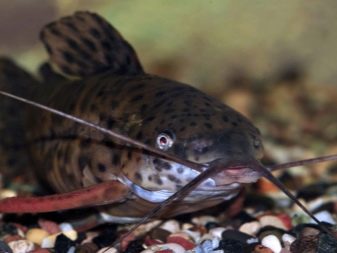
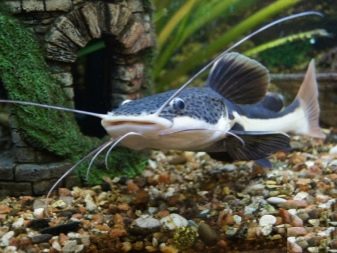
Representatives of some species of catfish have strong and sharp spikes on the fins and bony shields. A random injection about such a thorn can be extremely painful, so you should be careful with such representatives of the catfish.
Most aquarium catfish have a peace-loving character. They are able to get along without problems with many representatives of the world of aquarium fauna. However, among them there are real aggressors that can pose a threat to other inhabitants of the aquarium.
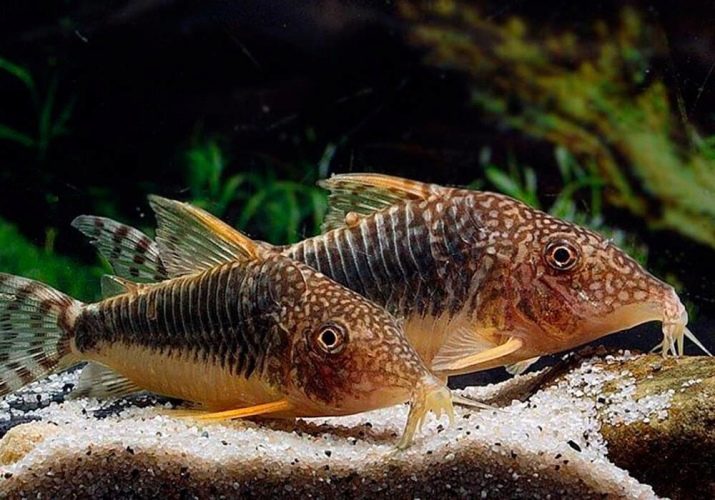
Aquarium catfish are often called “cleaners” or “aquarium cleaners." Actually, picking up the remnants of half-eaten and semi-decomposed food from the bottom, these fish help maintain cleanliness in the tank. This feature is often misinterpreted by inexperienced aquarists. Considering that pets have enough leftover food from the bottom and algae for their existence, they do not pay attention to a complete diet of catfish.

Such a neglected approach can lead to the death of bottom fish, which in reality require special food.
In general, catfish are very unpretentious creatures, the care of which does not cause special difficulties. Providing them with comfortable living conditions, the aquarist can create a fabulously beautiful and harmonious underwater kingdom in his home reservoir.
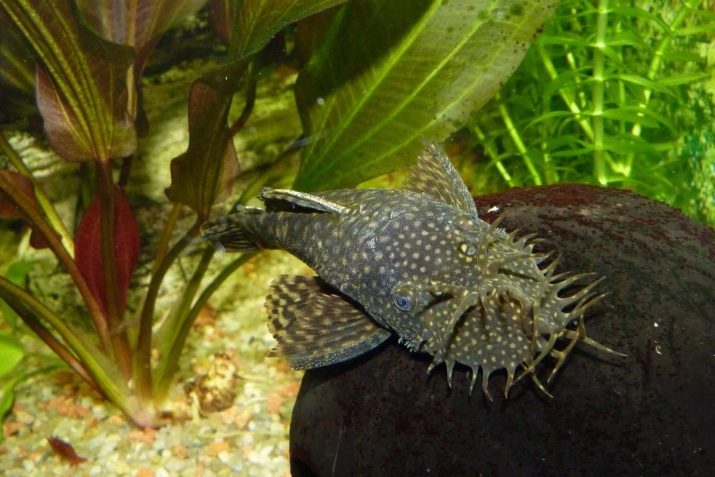
Species and their color
Many types of catfish are popular both among beginner amateur aquarists and among professionals. Representatives of some species are valued for their innocuous and peaceful disposition, others for bright and exotic colors, and others for bizarre body shapes. Below are the names of the most popular types of aquarium catfish.
Agamix or star catfish - one of the most unpretentious varieties of aquarium catfish, easily getting along with almost all types of fish (with the exception of large cichlids). The body sizes of adults vary from 10 to 12 centimeters in length. These creatures have a powerful and slightly elongated body, a large head of a triangular shape. The body and fins of the fish are coffee-brown in color, covered with small round spots. On the caudal fin, spots merge into transverse bands. Antennae are striped, with alternating dark and bright areas. Agamix life spans can reach 10 years.
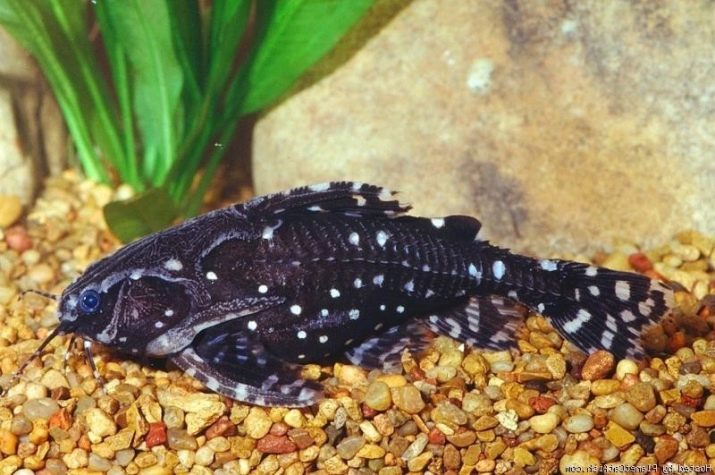
Corridors - a genus of representatives of the catfish order, found in the natural habitats in the Amazon and Orinoco basins. In total, about 150 species of these small peace-loving fish are known.

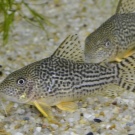

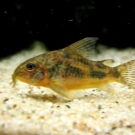

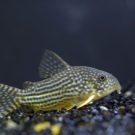
Pygmy - a dwarf representative of the genus of corridors, whose body length is only 2-2.5 centimeters. This fish has an elegant elongated body, a humpbacked back and a two-lobed tail fin with pointed ends. The fins are transparent, grayish in color. The color of the corridor-pygmy corpus is silver-gray or grayish-brown. Along the trunk and lower abdomen from both sides are 2 narrow dark stripes. Pygmy corridors are schooling fish, they need the presence of relatives.
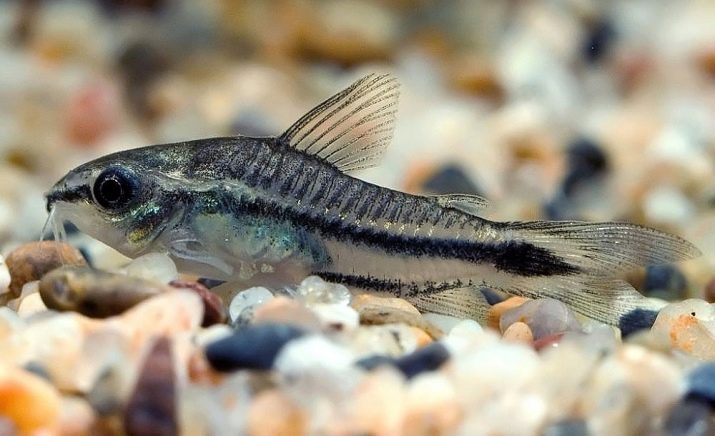
For this reason, it is recommended to keep these babies in the aquarium in a flock of at least 10 individuals.
Leopard catfish - Another attractive little representative of the genus of corridors.The body sizes of adults are about 6 centimeters. Fish have a very remarkable leopard color: all of their grayish-yellow bodies are decorated with numerous black sinuous patterns. Three dark lines consisting of dark dots and strokes stretch along the central line of the body of the leopard catfish. For this feature, these fish are also called "three-linear." Another characteristic detail of their appearance is the presence of a rounded black spot on the dorsal fin.
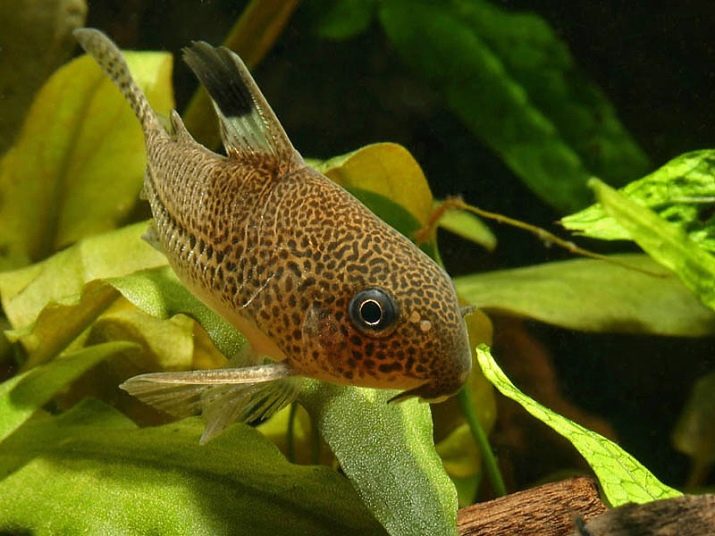
Venezuela Orange - A very spectacular representative of the genus of corridors, notable for its bright colors, peaceful and good-natured disposition. The body length of the Venezuelan orange corridors does not exceed 7.5 centimeters. Fish have a very attractive color, combining gray-turquoise and juicy orange colors. Dorsal and caudal fins - transparent, pale orange hue. The head is painted in turquoise gray with purple touches.
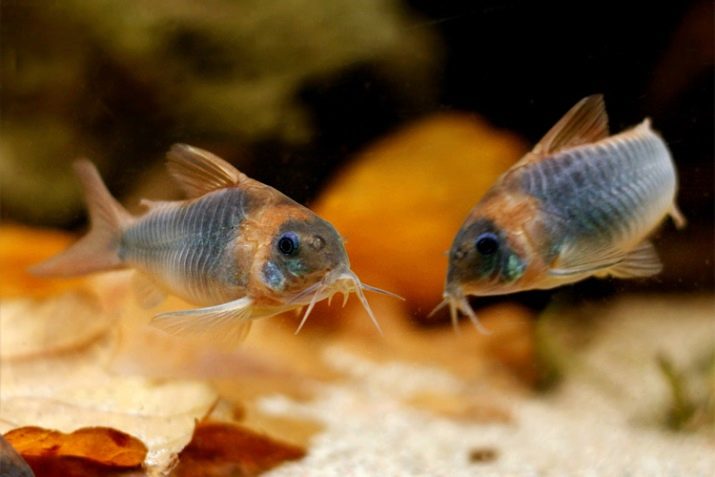
Siamese orca - freshwater aquarium catfish, whose size does not exceed 12 centimeters. This fish is characterized by mobility and energy. When kept in an aquarium with other fish, it rarely shows aggression. However, being a predator, the Siamese killer whale still poses a threat to small aquarium fish and fry. The body color of the killer whale is brown-black, diluted with three transverse stripes of a light shade. The back fin is dark in color, the tail fin is light yellow.
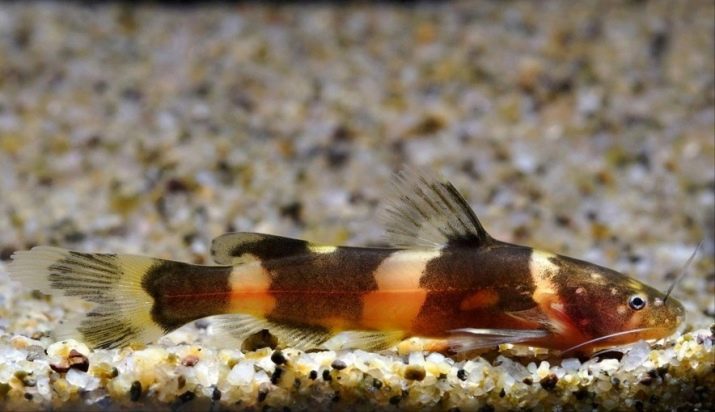
Panak - A spectacular freshwater representative of chain catfish. The body length of these fish, depending on the species, can vary from 7.5 to 40 or more centimeters. The back and sides of the panaks are covered with dark bone plates. The dorsal and pectoral fins are dotted with sharp spikes. These fish lead a bottom lifestyle, hiding in the shelters during the day and hunting at night. Panaki, being predators, pose a threat to small fish. However, they do not disdain both algae and the remains of invertebrate animals.
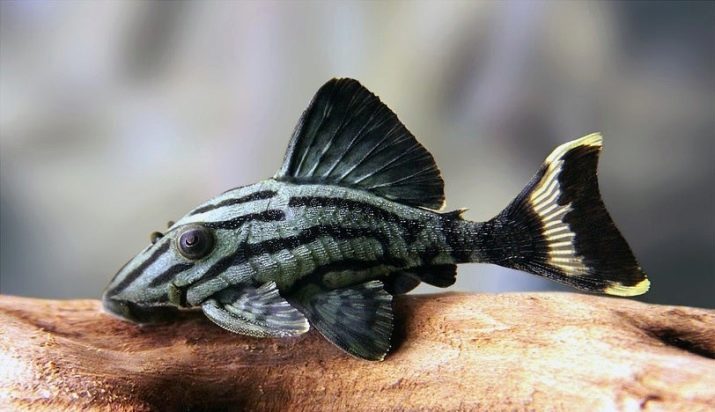
Somik Anchor - a fairly unpretentious miniature representative of the catfish, whose body length does not exceed 3 centimeters. The shape of his body visually resembles an anchor. Color varies from light coffee to dark brown. These fish have a very peaceful and calm disposition, get along well with other types of fish of a similar size.

Emerald brochis - A very attractive representative of shell-catfish. The body size of an adult is about 8 centimeters. The fish has a beautiful color, passing from a soft emerald color on the back to a light beige shade on the abdomen. Brochises are schooling fish, so in the aquarium they should be kept in the amount of several individuals.

Synodontis dalmatian - A very effective aquarium catfish, which, with proper care, can live for about 15 years. The body sizes of adults are able to reach 20 centimeters. The fish has an elongated elegant body of light color with dark spots. The tips of the fins have a bluish tint. Somiki-Dalmatians are considered excellent "cleaners" of aquariums.
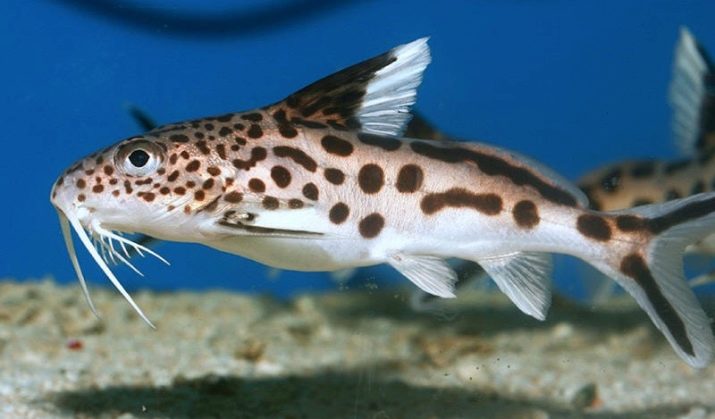
Jaguar synodont - Another beautiful representative of the order Somoiforidae, which is found in the wild in the freshwater areas of West Africa. It is notable for its white-golden color, diluted with a marble pattern of brown stripes. The fish can reach a length of 12-18 centimeters.
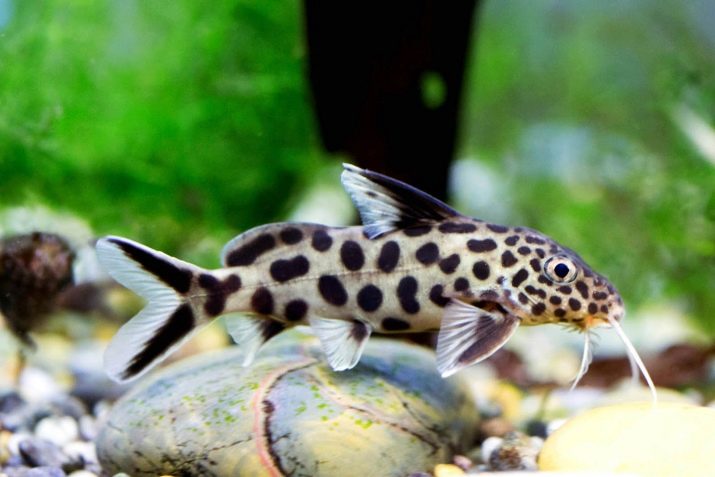
With proper care, the jaguar synodont is able to live about 12 years.
Gunther's catfish, Peacock catfish or Peacock eye - an elegant and agile fish, unpretentious to the conditions of detention. It has a slightly elongated body of gray-silver color with a striking mark near the gills, resembling a spot from the peacock's tail. In the mouth area are 4 pairs of antennae. When breeding these catfishes, it should be borne in mind that they are flock.

Sack-gill catfish - a large predatory fish, in artificial conditions, growing up to 30-40 centimeters.Its amazing feature is the presence of two primitive lungs, allowing the fish to survive in the absence of water for several hours. Body color varies from brown-black to pale brown. Sack-gill albino catfish are very rare. When breeding bag-sill catfish, one should remember that on their body there are poisonous spikes, an injection about which causes severe pain and numbness of the limbs.
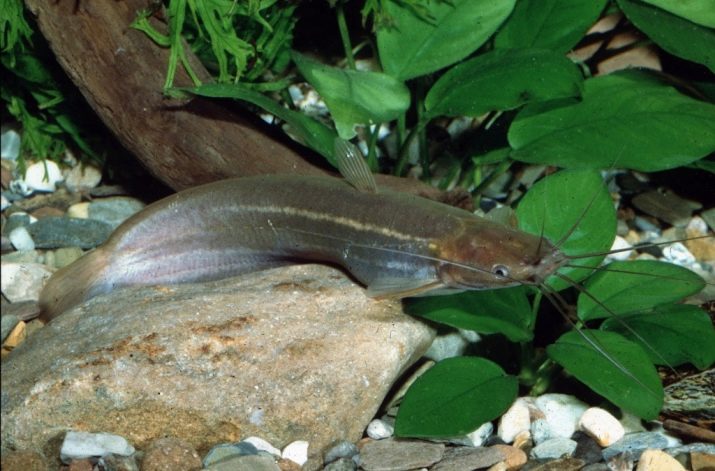
Ototsinklus - a small representative of the catfish family, especially appreciated among aquarists. This fish is an active algae eater that helps maintain cleanliness in the aquarium. Their body sizes can vary from 2.5 to 5.5 centimeters. Body color is golden brown. The upper torso in the head area is painted in marsh brown. A dark stripe runs along both sides of the body. The average lifespan of otocinclus is about 5 years.
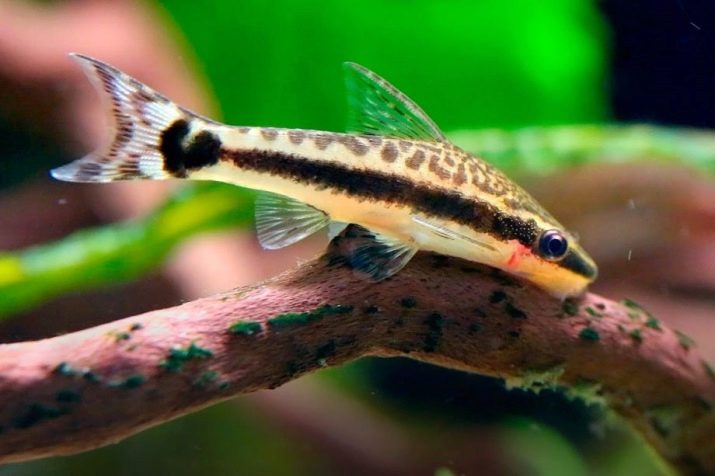
Yellow gerinoheylus or chanterelle catfish - a small freshwater fish, growing in aquarium conditions up to 12-15 centimeters. Body color - light or saturated yellow. A characteristic feature of these fish is the sucker mouth, with which they clean the space of the aquarium from algae. However, in adulthood, these creatures can pose a threat to the rest of the inhabitants of the aquarium. Having stuck to the body of another fish, gerinoheylus can cause her fatal damage.
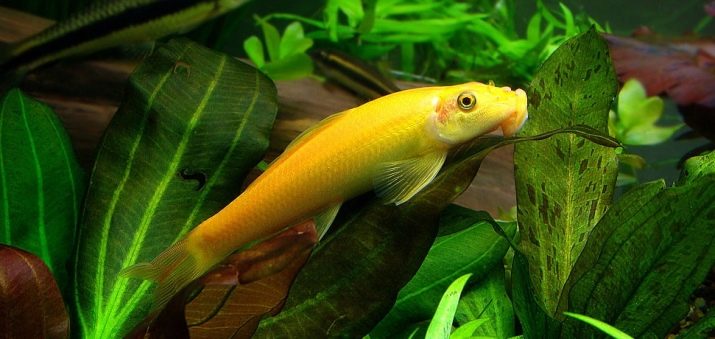
Therefore, they should be kept only with large and mobile fish.
Pyrara or Red-Tailed Catfish - one of the oldest species of large catfish, in its natural habitat capable of reaching two meters in length. The fish is notable for its interesting coloring. The back of this catfish can be brown, terracotta or almost black. The sides are painted a pale yellow shade, the belly is white. The caudal fin and the upper part of the dorsal fin are orange-red in color. This fish is considered quite voracious, very active, but with this very clumsy.
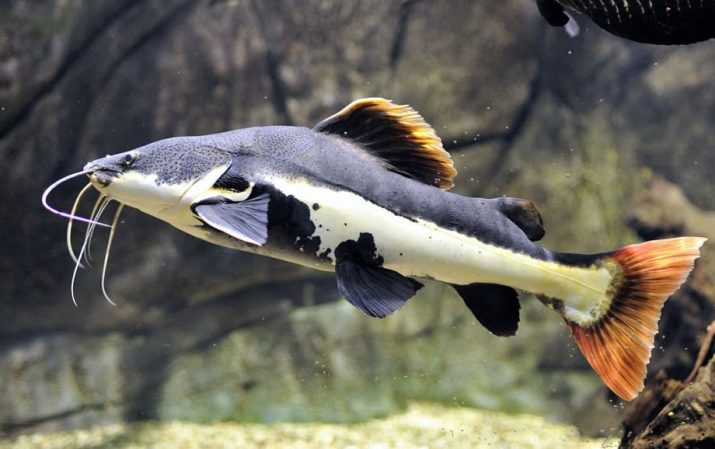
Striped platidoras or singing catfish - one of the most beautiful fish, which is especially popular among aquarists. They are peaceful, hardy, calm. However, their unique feature lies in the ability to make unusual sounds. Striped platidoras tolerate harsh environmental conditions without any problems. In addition, they easily get along with other medium-sized non-aggressive fish.
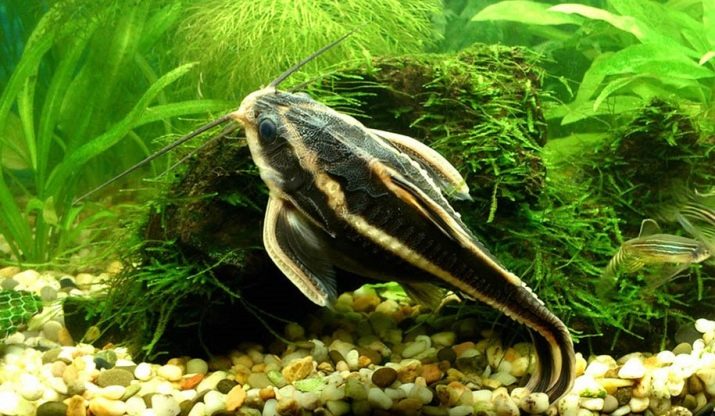
Olive catfish - Large freshwater fish of the ictalurian family. The body length of an adult can reach 1.6 meters, in connection with which these predatory creatures are usually grown not in decorative, but in public aquariums. The traditional color is solid olive gray. The belly is painted in gray-pearl color. A long gray mustache around a wide mouth gives these fish a slightly awesome, but very expressive look.
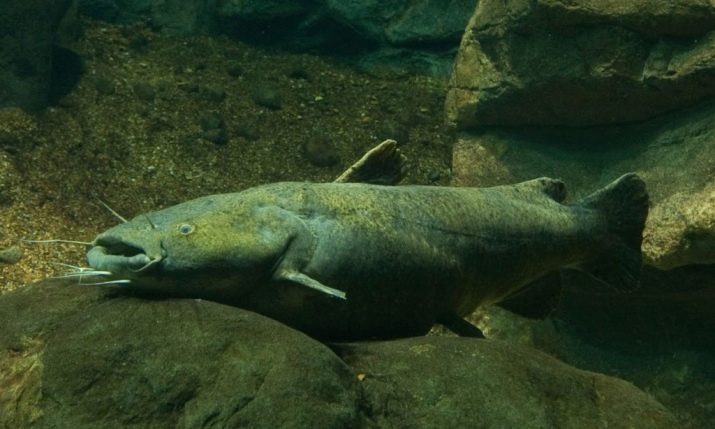
Brachyplate or tiger catfish - a large carnivorous predator that feeds on fish and large crustaceans. When kept in an artificial environment requires a lot of free space. The color of this spectacular fish, combining dark and light stripes, resembles a tiger skin. Tiger catfish has an elongated curved body, flattened and slightly wedge-shaped head.
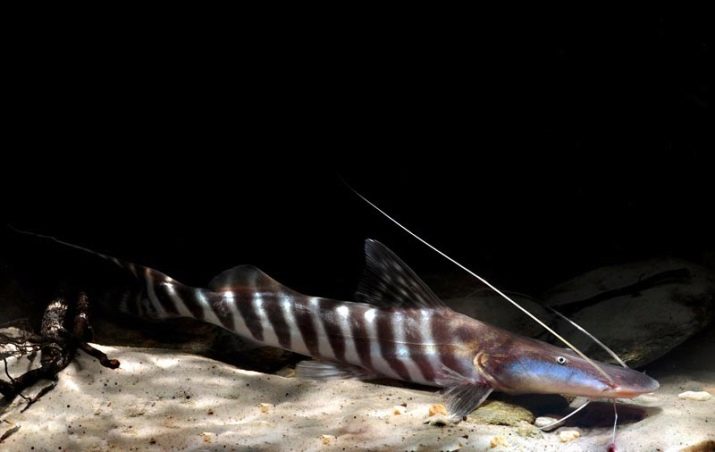
It is impossible to keep these predators in company with other fish (especially small ones).
How to distinguish a female from a male?
The specific differences of female catfish from males depend on the type and characteristics of these aquarium fish. However, there are a number of specific generalized criteria by which to distinguish a catfish from a boy from a girl.
Usually female catfish are larger than their relatives of the opposite sex. They have a more massive body. The abdominal line in females is often curved down. Males, as a rule, have a slender, slightly elongated body. Their color is almost always brighter and more spectacular than the color of the females.
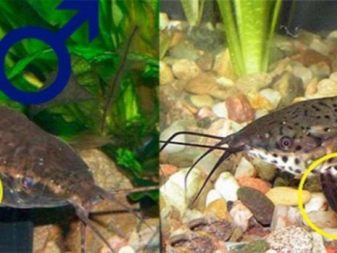
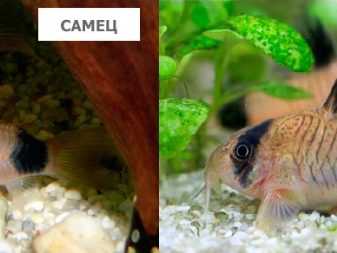
One of the characteristic features of males is the presence of a noticeable tubercle near the anus on the abdomen. Females have a small oval-shaped indented hole in this place.
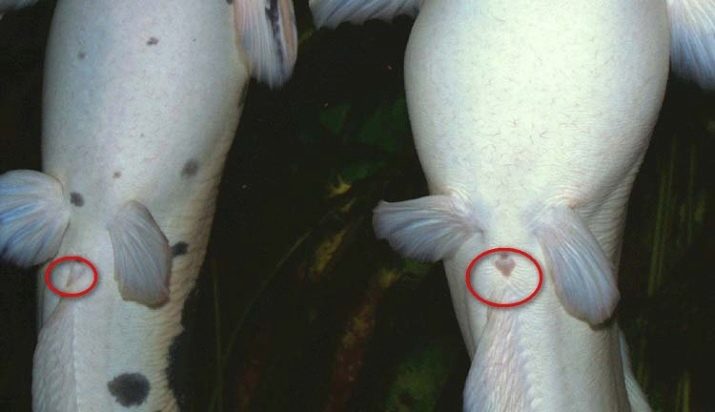
How to choose?
Planning in the near future to become the proud owner of aquarium catfish, it is worth considering a number of important parameters. The first thing to consider is the behavior of fish of one species or another. Some species of catfish are able to peacefully hide in stones all day, while others - more restless and impulsive - can easily destroy the interior of the aquarium.
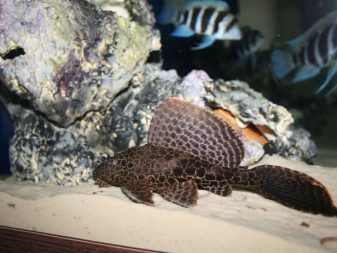
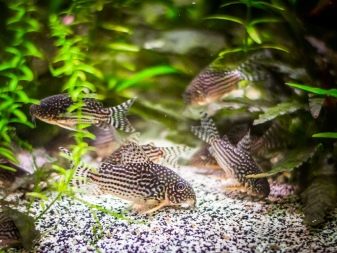
It is imperative to consider whether the fish is predatory. This condition must be taken into account if catfish are planned to be kept in a common aquarium with other fish. At the same time, the small size of the catfish does not at all declare its safety for other inhabitants of the aquarium.
Examples are known when catfish 12-15 centimeters long ate their neighbors a little smaller.
The size of an adult is another important criterion that should be considered when choosing aquarium catfish. So, beautiful and small fry of the red-tailed catfish initially have dimensions of about 5-8 centimeters. In the future, these creatures are able to grow up to one and a half meters long.

Another parameter to be guided by when choosing catfish is health. So, when buying, you should pay attention to the behavior of the fish, its color and appearance. A healthy catfish usually behaves calmly and phlegmatically, has a color that meets the standard of its appearance, and has no visual damage to the body.
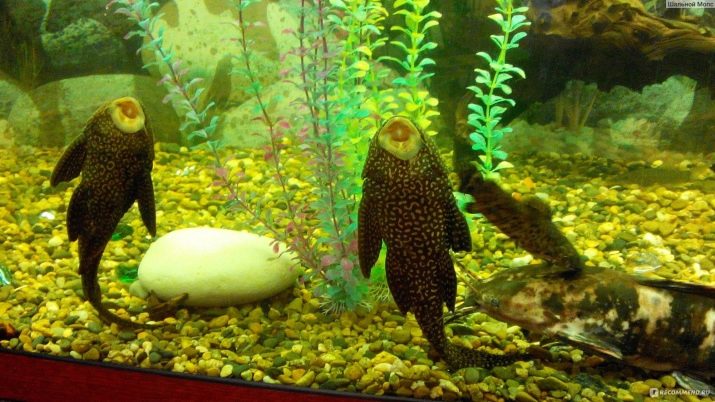
Basic content rules
Aquarium catfish are unpretentious creatures. However, their health and life expectancy directly depend on the conditions of detention.
Considering that catfish are bottom fish and spend most of their time in depth, they should be kept in spacious wide aquariums.
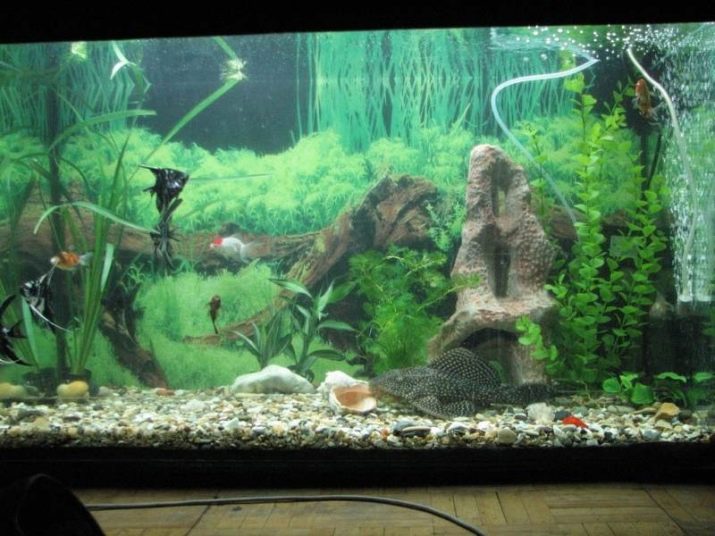
At the same time, the height of the tank does not matter much.
Aquarium Care
Most catfish calmly tolerate a slight turbidity of the water, lowering the level of oxygen and temperature. However, disturbances in biological balance in the aquarium, an excess of salts and nitrates in the water can cause them discomfort and poor health.
To ensure pets a comfortable existence, it is necessary to control the temperature of the water, the level of its hardness and acidity. Preferably, the temperature of the water in the aquarium is maintained at a level of 18-26 ° C. Recommended hardness level is 6-8 units.
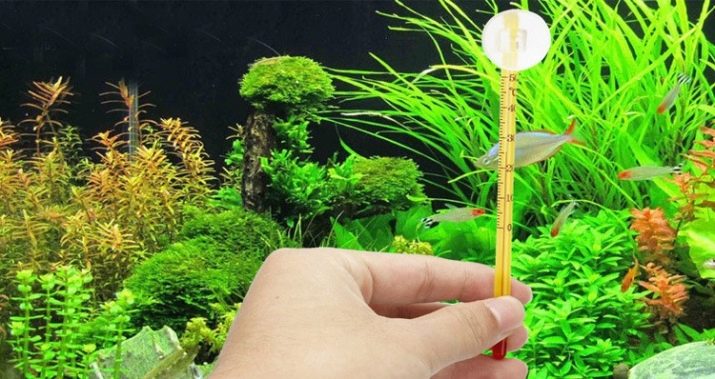
When keeping catfish, it is advisable to conduct regular surface cleanings of the aquarium. They do not disturb the established reservoir ecosystem and do not cause radical changes in biological equilibrium.
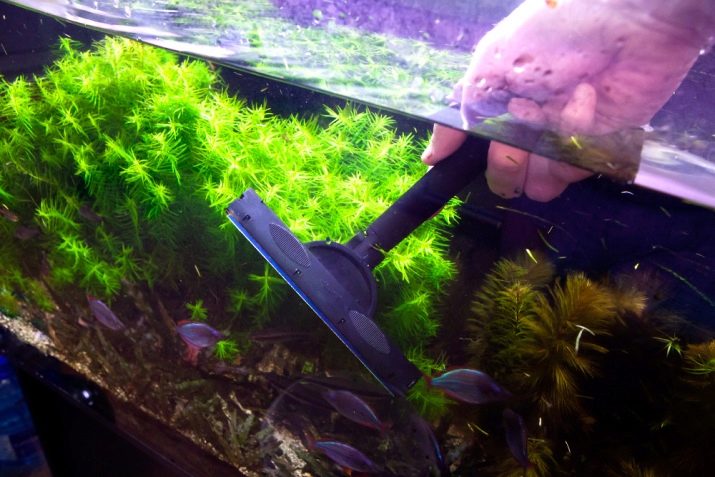
When surface cleaning the aquarium, catfish need not be removed from the water. However, this procedure should be carried out carefully, without scaring the fish.
What to feed?
The diet of catfish depends on their type. Most bottom fish are omnivores. They willingly absorb both dry and live food, and their semi-decomposed residues. With great appetite, aquarium catfish eat bloodworms, tubule mumps, daphnia, cyclops, and coronet. It is recommended to feed predatory catfish with slices of lean meat. To maintain the well-being of pets, it is advisable to periodically treat them with tableted spirulina.
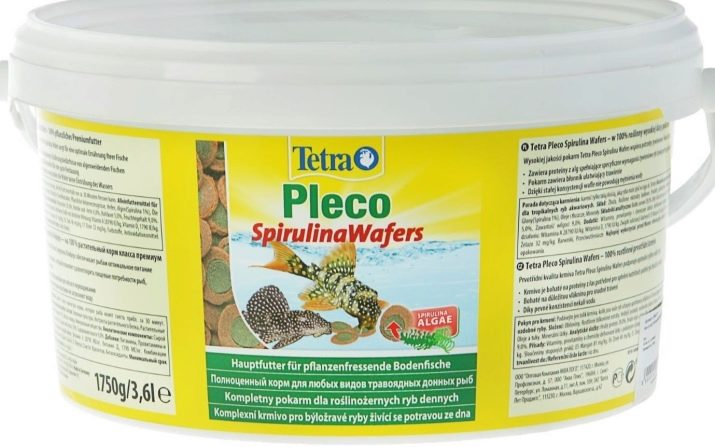
Possible problems
Often beginner aquarists are faced with situations when catfish begin to get sick or die for no apparent reason. Gross disturbances of biological balance in an aquarium usually lead to such consequences. Another reason leading to the death of catfish is a change in the level of acidity of water and the content of salts in it.
Some species of catfish endure the light salinity of water, but for most of these fish, salt water is fatal.
There are frequent cases when catfish begin to jump out of the aquarium. This suggests that oxygen levels have critically decreased in water.In this case, you can correct the situation using an aerator, which will restore the oxygen level in the water to normal.
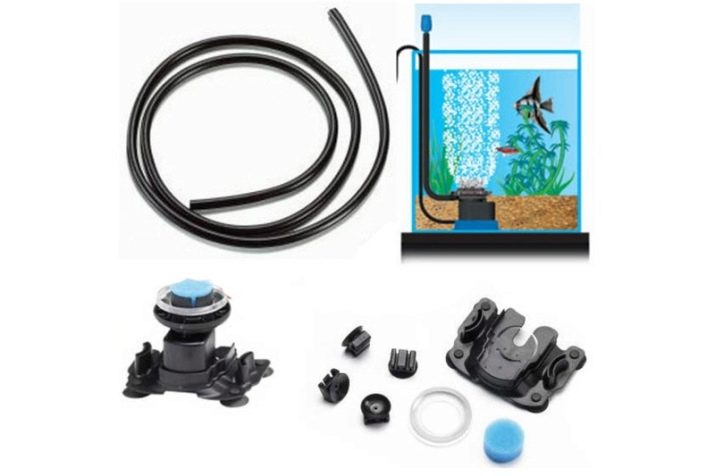
Breeding
To obtain offspring from some species of aquarium catfish, they often resort to the help of spawning grounds. It is equipped from a wide basin with clean water. The temperature of the water in the basin should be 19-21 °. A piece of plexiglass is laid at the bottom of the pelvis, to which the female will subsequently stick eggs.
Next, 3-4 young males and 1 young female are launched into the pelvis. Fish should be well fed first. The pelvis is covered with a clean cloth, leaving a narrow gap for air.
To stimulate spawning, the temperature is reduced to 17-18 °.
Spawning must be closely monitored. As soon as the female finishes laying eggs, she and the males should be immediately transplanted back to the aquarium. Then the temperature of the water in the basin should be raised to 27 °, which will provide optimal incubation conditions, and wait for the fry to appear.
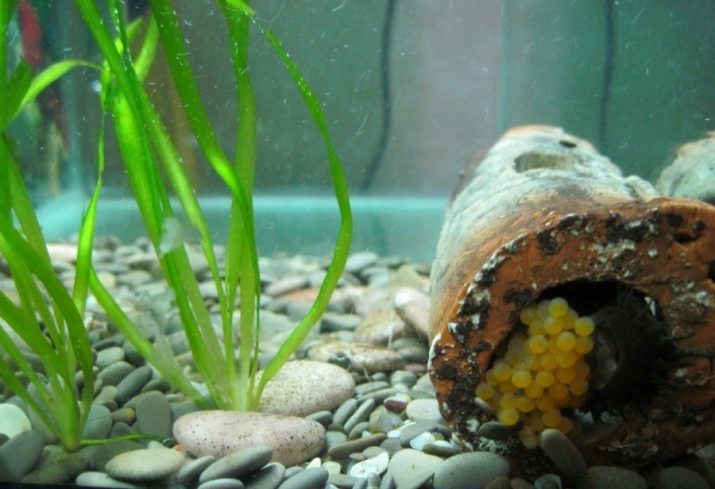
Compatible with other fish
Most catfish have a peaceful and calm character. However, some of their species are recommended to be kept separate from other fish. So, some catfish are able to pose a threat to the rest of the inhabitants of the aquarium, while others can become victims of their more aggressive neighbors. For instance, It is not allowed to keep small catfishes with large cichlids, and large predatory catfishes - with any small fish and fry.

Tips
Somics in the daytime prefer to be in shelter. To create the most comfortable conditions for them, you can put driftwood at the bottom of the aquarium, install an artificial grotto or an underwater cave.
When equipping an aquarium, it is important to remember that at its bottom there should not be any sharp objects - stones or decor with cutting edges.

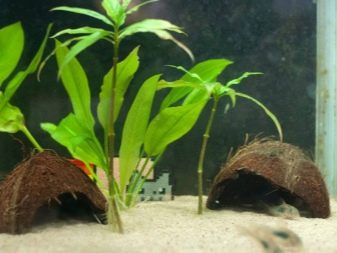
This requirement is due to the fact that aquarium catfish have a very tender abdomen, which they can easily injure on sharp objects.
See the video below for more about aquarium catfish.










